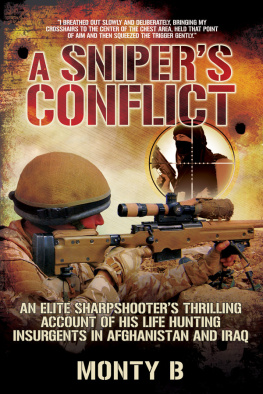Published in Great Britain and
the United States of America in 2017 by
CASEMATE PUBLISHERS
The Old Music Hall, 106108 Cowley Road, Oxford OX4 1JE, UK and
1950 Lawrence Road, Havertown, PA 19083, USA
Casemate Publishers 2017
Paperback Edition: ISBN 978-1-61200-486-0
Digital Edition: ISBN 978-1-61200-487-7
Mobi Edition: ISBN 978-1-61200-487-7
All rights reserved. No part of this book may be reproduced or transmitted in any form or by any means, electronic or mechanical including photocopying, recording or by any information storage and retrieval system, without permission from the publisher in writing.
A CIP record for this book is available from the British Library
For a complete list of Casemate titles, please contact:
CASEMATE PUBLISHERS (UK)
Telephone (01865) 241249
Email:
www.casematepublishers.co.uk
CASEMATE PUBLISHERS (US)
Telephone (610) 853-9131
Fax (610) 853-9146
Email:
www.casematepublishers.com
This book is dedicated to my mother.
INTRODUCTION
T HE STORY OF MARKSMANSHIP PREDATES WRITTEN history and Homers Odyssey recounts Odysseus shooting an arrow through twelve ax heads to win back Penelopes hand. Centuries later the crossbow began supplanting the bow and in 1382 a Moscow cloth maker used a crossbow to slay a Tartar commander at 650 paces. Firearms gradually replaced stringed weapons and Hungarian borderers ambushed the Ottomans with them from concealment in around 1522. In 1565 the Ottomans applied their experience by sending out their matchlock-armed soldiers at Fort St. Elmo to hide in the bushes and pick off unwary Christians.
Initially firearms progress was slow and the 1466 Swiss shooting matches for matchlock firearms were held at 100 paces. Six years later, with the introduction of riflingspiral grooves cut inside the barrel that imparted a spin to the ball that made it fly straighter for a longer distancethe distance for the matches was 230 paces. By the 16th century matches were commonly held at 250280 paces.
Despite the rifles superior accuracy, the smoothbore musket remained the preferred infantry arm. Volume of fire followed up with a bayonet charge decided battles, not accuracy. A skilled musketman, firing an undersized ball, quick to load, was expected to fire five times a minute. In contrast the rifle fired a tight-fitting ball that could take several minutes to load and since rifles werent adapted to accept a bayonet, a rifleman with an empty rifle was defenseless. After a few shots, the rifle barrel fouled, making reloading more difficult, reducing the rate of fire further as the rifleman struggled to reload. Rifles then were limited as an auxiliary arm and remained largely in the hands of specialized troops. From a cost perspective, rifles were also more expensive and timely to produce. Rifling a barrel required a days labor.
Starting with the Thirty Years War (161848), rifles slowly gained acceptance when the Landgrave of Hesse armed three companies of his green-clad chasseurs with rifles. They served as scouts and guides who also harassed the enemy. Other states that issued a limited number of rifles included Bavaria (1645), Prussia (1674), and Sweden (1691). It is unknown when the Holy Roman Empire issued rifles, but rifles were in the hands of Tyrolese civilians and grenzers (border dwellers) of the Empire. In the early 18th century the Norwegian ski jgers were issued rifles.
As rifles gained acceptance, there arose a greater understanding of their potential. In 1808, writing under the pseudonym of A Corporal of Riflemen, Captain Henry Beaufoy prophetically penned:
When opposed to riflemen, it is the bravest who fall, for it is the bravest who expose themselves most, and thus become most conspicuous. The Officers of our own army in Holland obtained this experience, and in several instances found it necessary to change their hats, and assimilate themselves to the private men. That powerful influence on the mind also, which prevails in a variety of ways in an army, has its full effect in that by which this species of force is employed, as well as that against which it is directed. It has been readily confessed to the writer by old soldiers, that when they understood they were opposed by riflemen, they felt a degree of terror never inspired by general action, for the idea that a rifleman always singled out an individual, who was almost certain of being killed or wounded; and this individual every man with ordinary self-love expected to be himself. How much more must this influence operate, where individual danger is incurred in heroic actions, the success of which must be rendered almost impossible, while the individual conceives himself the particular object of perhaps numerous riflemen. Destroy the mind, and bodily strength will avail but little in that courage required in the field of battle.
Accuracy and rifles traveled an arduous road before winning widespread military acceptance. As fate would decree it, by the time the muzzle-loading rifle was universally adopted, it was rendered obsolete by the breechloader. However, muzzle-loading rifles established a legacy of marksmanship that has been relegated to the dustbin of history. Almost equally forgotten is the story of the rifleman and the sharpshooter who began a tradition maintained by their heirs, todays snipers.











